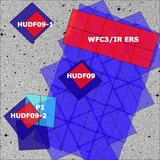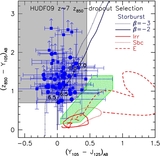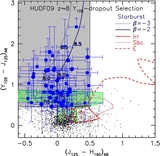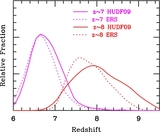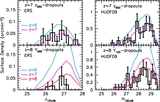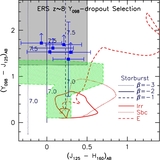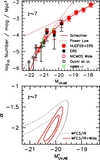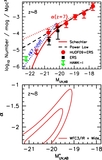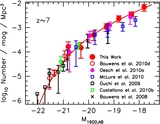Image Details
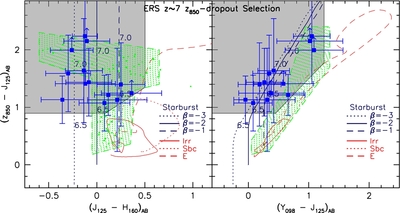
Caption: Figure 6.
Left: z 850 − J 125 vs. J 125 − H 160 two-color diagram we use to identify z ~ 7 z 850 dropouts over the ~40 arcmin 2 ERS observations (first part of our two-part z 850-dropout criterion). Symbols and lines are the same as Figure 2. Right: z 850 − J 125 vs. Y 098 − J 125 two-color diagram used to identify z ~ 7 z 850-dropout galaxies (second part of our two-part z 850-dropout criterion). Lines and symbols are as in the left panel. The colors required for our z 850-dropout selection are indicated in gray. We base our z ~ 7 z 850-dropout selection on a z 850 − J 125-dropout criterion rather than a z 850 − Y 098-dropout criterion (e.g., as used by Wilkins et al. 2010) to extend our selection over a wider redshift range (see Section 3.4). In addition to the two-color Lyman-break selection presented, we also enforce a very strict optical non-detection criterion involving a χ 2 opt quantity (Section 3.3; Appendix D).
Copyright and Terms & Conditions
© 2011. The American Astronomical Society. All rights reserved.


